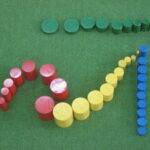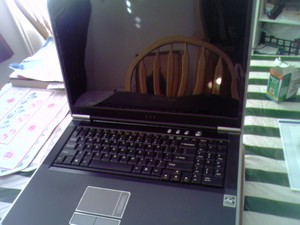Maria Montessori was a unique educator because she went beyond traditional ideas and was a pioneer in many respects. She became the first woman engineer in Italy. Later, she became the first woman doctor in Italy. This scientific training taught her to closely observe the world around her. These observations were then utilized with young children, for whom she developed new ideas and methods for teaching. One of her unique areas of instruction is in the Sensorial area.
Sensorial education has a great deal of importance in the Montessori curriculum. First, it provides us the opportunity to see if there are any deficiencies in vision, hearing, etc. The earlier these problems are addressed, the more successful the child will be in overcoming his difficulties.
Sensorial education is also very important because it helps to fine-tune the various senses to aid in future professions. Montessori talks about the importance of a cook being able to smell the difference between fresh and tainted food, or a doctor being able to hear the slightest irregularity in a heartbeat.
Sensorial education helps refine the senses so that the child can better appreciate the world around him. He leans different colors, sounds, tastes, textures, etc. It increases his desire to explore his world and allows him to constructively categorize all that he encounters.
An interesting aspect of this curriculum is that Montessori went deeper than the well-known five senses. Activities for auditory, gustatory (taste), and olfactory (smell) senses all exist. But visual is divided into three sub-areas: size, color, and form. When we look at things, we need to take all three factors into account. Montessori teaches to isolate each sense or each aspect of the sense, in order to truly refine it. She also extends the tactile sense. Tactile activities are done primarily with just the fingers. Stereognostic uses full arm movement and the entire hand. Baric is developing a sense of weight. Thermic is developing a sense of temperature.
Sensorial education provides an indirect foundation for other curriculum areas. The Montessori bells are used for auditory discrimination, but also later can be used for musical interest. The red rods are used before the number rods. The monomial and trinomial cubes are physical representations of algebraic equations. The color boxes provide a foundation for art. All of the activities introduce language to describe the world (e.g. thick/thin, names of colors, light/dark, silence/sound, rough/smooth., etc.). Sensorial education is the foundation of the Montessori curriculum because it has an effect on the whole person.
For more on Montessori philosophy and the math curriculum, click here.
Resources:
Class notes taken from Academic Session of the Montessori Teachers Institute of Bowling Green, Summer 1999.
Montessori, Maria. The Absorbent Mind. New York: Henry Holt & Company, 1965.
Montessori, Maria. The Discovery of the Child. New York: Ballantine Books, 1966.
Montessori, Maria. Dr. Montessori’s Own Handbook: A Short Guide to Her Ideas and Materials. New York: Schocken Books, 1965.
Montessori, Maria. The Montessori Method. New York: Schocken Books, 1964.
Montessori, Maria. The Secret of Childhood. New York: Ballantine Books, 1966.
Neubert, Ann Burke. A Way of Learning. Boston: The Early Education Co., 1973.


